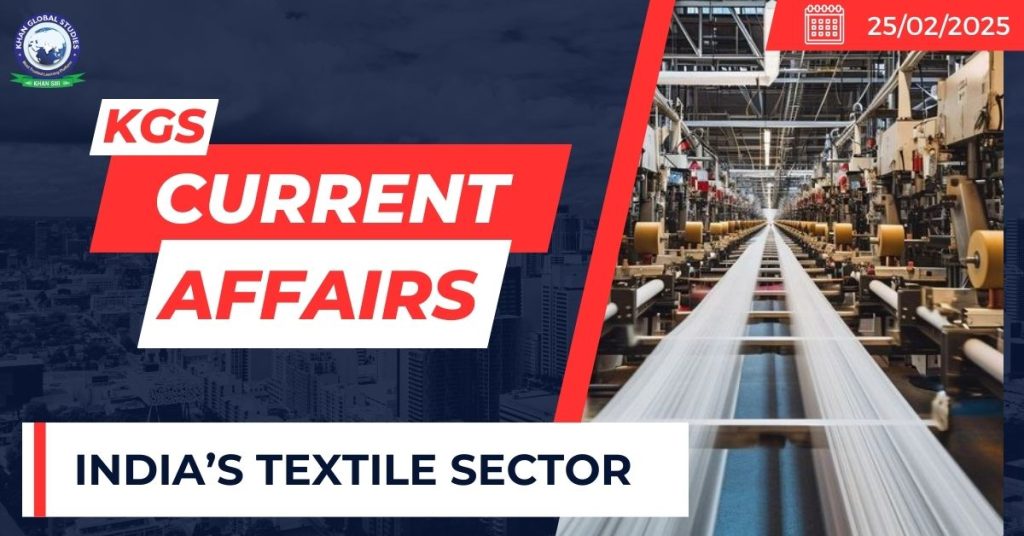Context:
Despite being a global leader in cotton and synthetic fibre production, India’s textile and apparel industry is lagging in textile exports.
Present status of India’s textile Sector:

- The industry contributes nearly 2% to the country’s GDP, 10% to industrial production, and 8.21 % to India’s overall exports.
- India is the second largest producer of cotton, accounting for 24% of global production after China.
- The sector holds a 4.5% share in global trade, with the United States and European Union accounting for 47% of India’s textile and apparel exports.
- India is the sixth largest exporter of textiles, with a 3.91% share in the world’s textile exports which is about US $ 35.87 bn in 2023-24.
- This sector is the second largest employment generator in the country (Provides direct employment to over 45 million people), after the agriculture sector.
- As per the Ministry of Textiles, Man-made fibres (MMF) consumption in India is just 3.1 kg per capita, compared to 12 kg in China and 22.5 kg in North America.
Why India is lagging behind in Textile exports?
India’s fragmented cotton supply chain, spread across multiple states which drives up logistical costs and hinders large-scale production.
- Vertically integrated supply chains allow countries like Vietnam and Bangladesh to manufacture garments at far more competitive prices.
India textile exporters are constrained by complex procedures, as they require exporters to meticulously account for every square centimetre of fabric, buttons and zippers used.
As per the economic survey 2024-25 vertically integrated ‘fibre-to-fashion’ firms in competitor nations such as China and Vietnam export low-cost products and maintain consistent quality and are nimble enough to adjust to the fast-changing nature of the industry
- Competitor nations also benefit from free trade agreements (FTAs) with consumer markets.
In the MMF sector, high raw material costs further erode India’s competitiveness.
o In January, polyester fibre in India was 33-36% costlier than in China, while viscose fibre was 14-16% more expensive.
Key Government Schemes/Initiatives:
PM Mega Integrated Textile Region and Apparel (PM MITRA) Parks: The Government has approved the setting up of 7 PM MITRA Parks in Greenfield/Brownfield sites with world-class infrastructure.
- These parks will have plug-and-play facilities with an outlay of Rs. 4,445 crores for a period of seven years up to 2027-28.
National Technical Textiles Mission (NTTM): It was created for a period from 2020-21 to 2025-26 with the following key pillars for the overall development of the textile industry in India:
- Research Innovation & Development
- Promotion and Market Development
- Education, Training and Skilling
- Export Promotion
BHARAT TEX 2024 & 2025: Successfully organized first time in February 2024 by the consortium of Textiles Export Promotion Councils.
- In the second edition held in February 2025, it aimed at boosting India’s textile exports from ₹3 lakh crore to ₹9 lakh crore by 2030.
Samarth Scheme: It has been extended for two years (FY 2024-25 and 2025-26) with a budget of Rs. 495 Crore to train 3 lakh persons in textile-related skills.
100% Foreign Direct Investment (automatic route) is allowed in textiles.
Production-linked Incentive (PLI) Scheme worth Rs. 10,683 crore (US$ 1.44 billion) for MMF and technical textiles over a five-year period.

